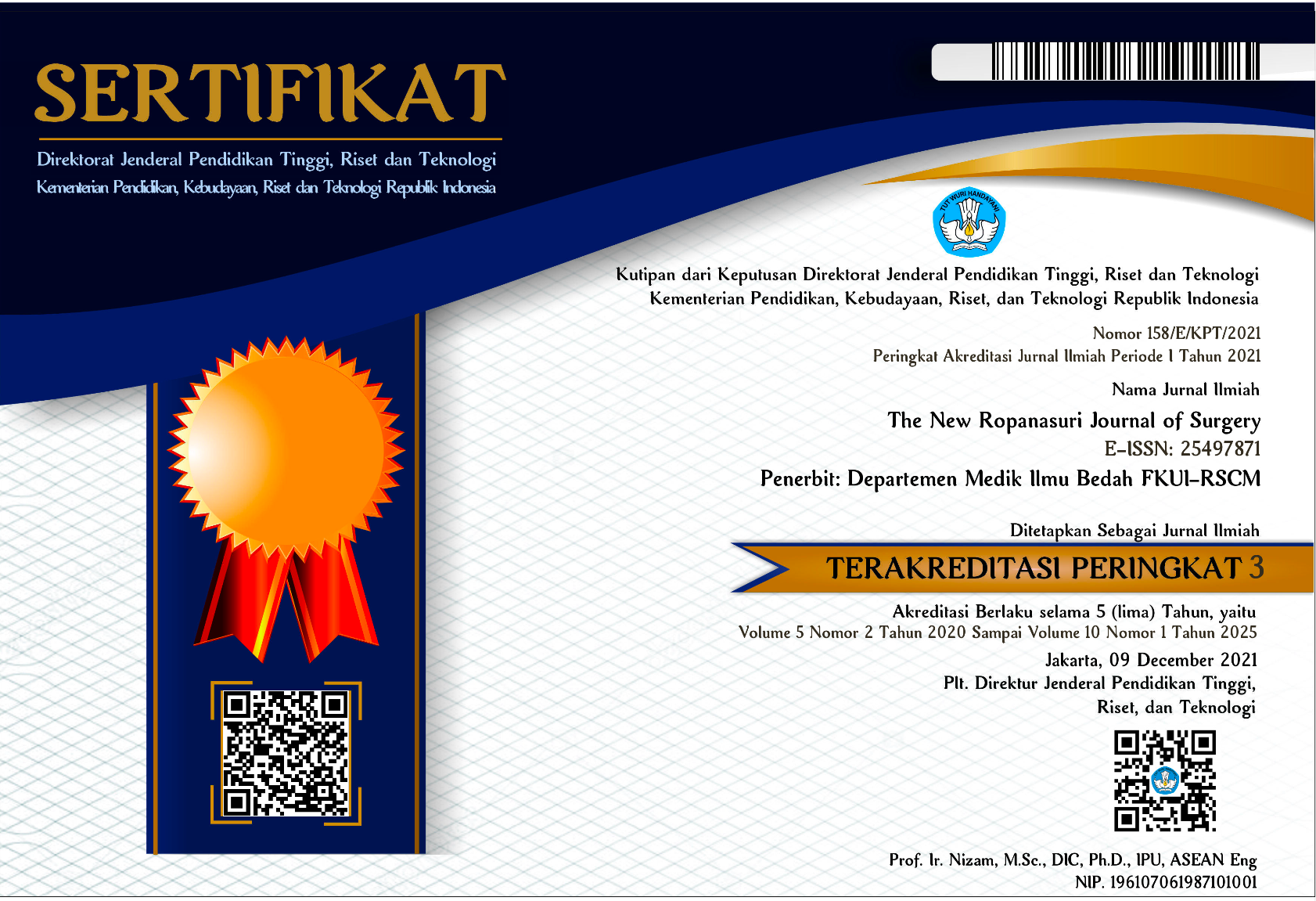Abstract
Introduction. Complex anal fistula has a high postoperative recurrence rate and incontinence as well. There have been many emerging surgical techniques, but there are no new recommendations for managing complex anal fistula. One of the critical parameters in evaluating surgical technique outcomes is the recurrence rate and incontinence. This study describes postoperative results in recurrence rates and incontinence in various surgical techniques in managing complex anal fistula.
Method. This review commenced with literature searches on online databases, including Cochrane Library, MEDLINE (PubMed), ScienceDirect, and CINAHL (EBSCOhost).
Results. The study enrolled two RCTs, four systematic reviews, 14 retrospective and prospective studies, and a case series. The recurrence rate and incontinence of fistulotomy, seton drainage, advancement flap, were 4-19% and 0-4%, 3-47% and 0-7%, 20-27%, and 0-38%, respectively. The recurrence rate of LIFT, VAAFT, PERFACT, and TROPIS were 7-16.1%, 7.5-33%, 20-26.7%, and 14%, respectively; no change in pre– and postoperative continence scores.
Conclusions. According to this study, the lowest recurrence rate was in the TROPIS procedure and the highest in fistulotomy. Meanwhile, the lowest incidence of incontinence was in LIFT, VAAFT, PERFACT, and TROPIS, and the highest was in the advancement flap procedure.
Recommended Citation
Putranto, Agi S. and Layardi, Winda J.
(2022)
"Review: Management of Complex Anal Fistula,"
The New Ropanasuri Journal of Surgery: Vol. 7:
No.
1, Article 11.
DOI: 10.7454/nrjs.v7i1.1118
Available at:
https://scholarhub.ui.ac.id/nrjs/vol7/iss1/11













